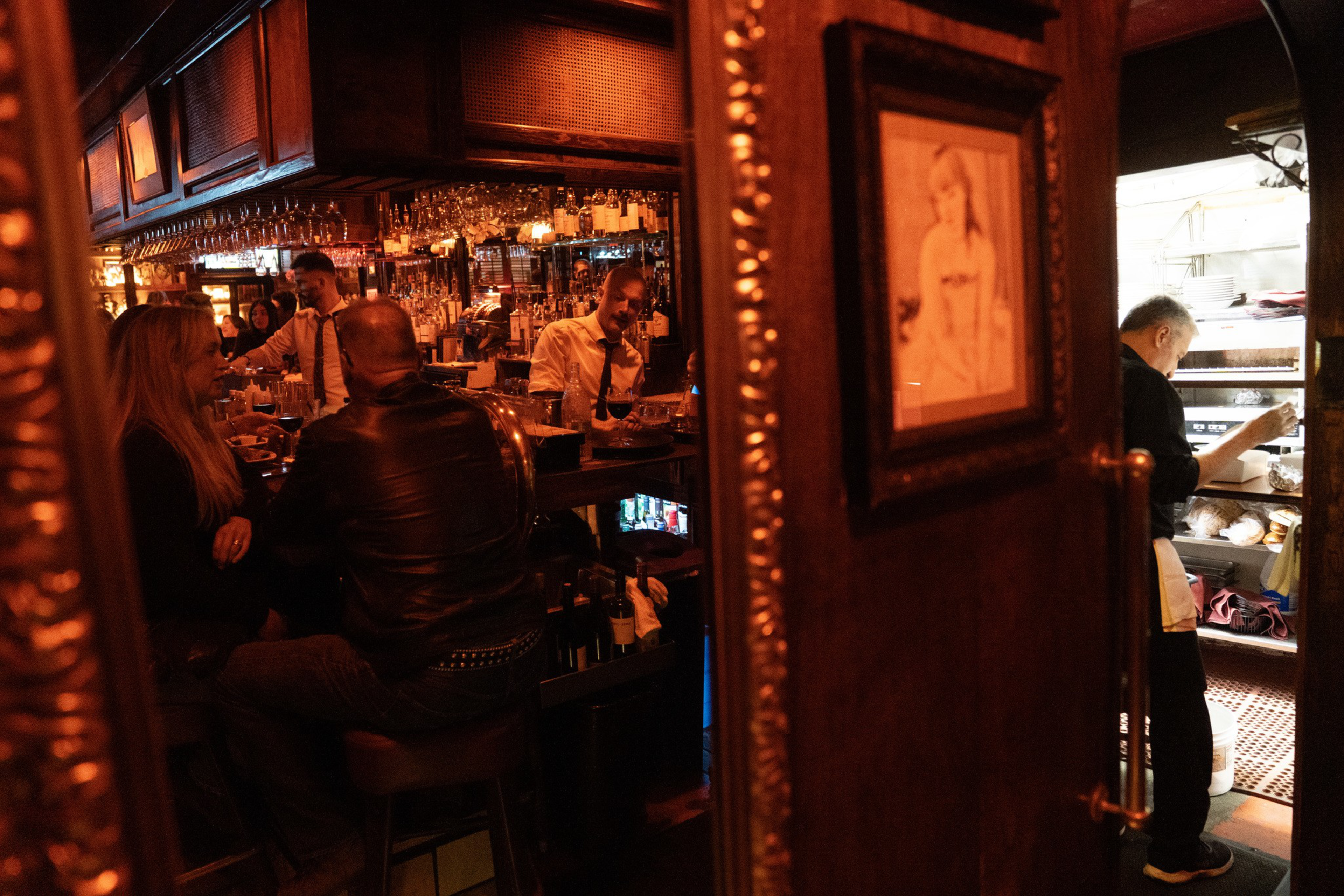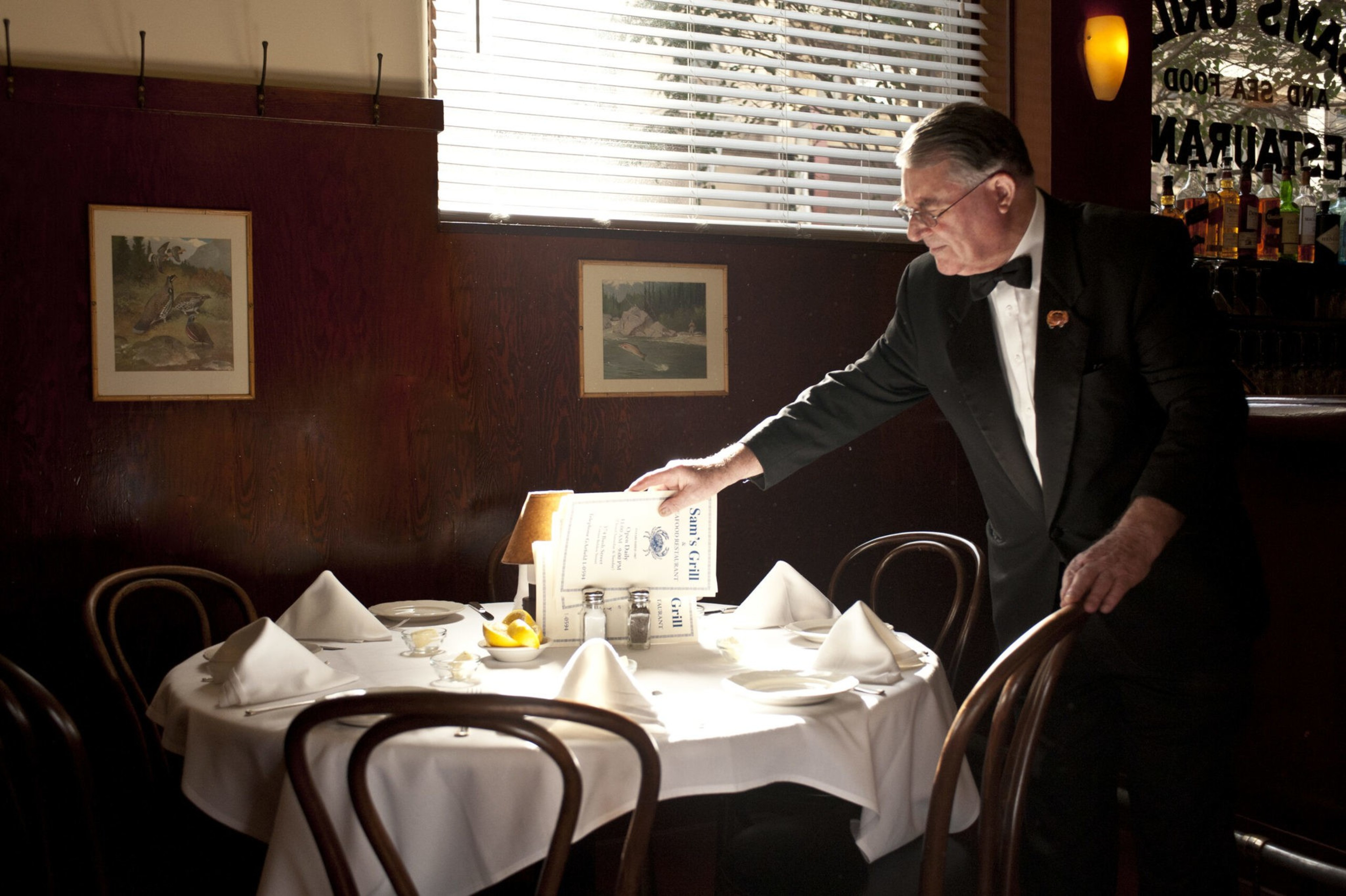After several years of struggle, San Francisco’s 2025 dining comeback isn’t about what’s new. It’s not about pop-ups making pizza from bespoke flour, Tokyo-inspired listening bars, or heady prix-fixe menus. It’s about the restaurants that never went away — the ones without a name-brand chef, ones that lean on martini-and-red-meat menus.
Places like Bix in Jackson Square, which, according to owner Doug Biederbeck, is having its best year since it opened in 1988. That was during the city’s coke-fueled yuppie days. It was an era of seminal restaurants like Stars, Masa’s, Campton Place, and Fog City Diner (which Biederbeck himself helped open), all of which are gone. But Bix remains. And it’s killing it.
Inside, there’s a golden hum and the murmur of regulars at the bar. Servers wear jackets and vests. “We still check coats; we still polish silver,” says Biederbeck. “Hospitality is half the job — maybe more.”



All across town, a similar story is playing out at restaurants that, at a glance, appear to be out of step with the times. Brazen Head, which opened in 1980 in Cow Hollow, is also having a banner year. Owner Eddie Savino says sales have doubled since 2020. House of Prime Rib, Tadich Grill, John’s Grill — all places that once might have seemed disconnected from San Francisco’s progressive culinary scene — are packed.
The situation flummoxes even the people who are benefitting most. Biederbeck, for one, can’t put his finger on the reasons for Bix’s smashing success this year. Sure, it’s situated on Gold Street, the clandestine, brick-lined alley in the Jony Ive–revitalized Jackson Square. But it’s more than that — “it’s the largest volume of sales we’ve ever achieved,” he says of his moody, high-ceilinged restaurant with the intentional patina of yesteryear, where a host offers to check your coat or bag — a once-common nicety, now on the brink of extinction. “I suppose it’s a red herring to try to compare where we started to where we are now,” he says. “All I know is we are busier and have higher sales.”
That other ’80s baby, Brazen Head, isn’t doing anything notably different, according to Savino. Yes, the parklet built in 2020 added some seats, allowing the restaurant to turn more tables. But the lights are still set low and red; servers still jot orders by hand. Dinner service stretches to midnight — and, in a town that’s increasingly early-to-bed, people dine there late. On a recent Saturday at nearly 9 p.m., the wait time for a table was nearly two hours.
Despite the requisite Impossible burger, the Brazen Head menu mostly hews to classics like double-cut pork chops, shrimp scampi, and prime rib with creamed spinach (though the pro move is to substitute a baked potato with a pat of butter). “Next year, you’re going to get what you had last night, and it’ll be the same time, if not better,” Savino says, his Bronx accent still strong. “We’re not trying to be intimidating. Our food is just a little bit above what you’d get at Grandma’s house.”
In a restless city that loves to reinvent itself and is proud of its forward culinary thinking, consistency — that promise of sameness — is what diners seem to crave. At Brazen Head and Bix, the people who were working behind the bar a decade ago are still there —and sometimes they’re serving the same people in front of it. But surprisingly, the mix of people patronizing these restaurants is one of the only things changing.

Sam’s Grill, which opened in 1867, still looks and feels like a lunchroom for bankers: white tablecloths, dark wood paneling, crab Louie, waiters in bow ties. But owner Peter Quartaroli says he has watched the clientele subtly shift. According to him, there are more women, more younger diners, more people who “want to touch something authentic.” And, though he declined to share specifics, he says business is nearly at its peak. “We’re as busy as we’ve ever been.”
If the pandemic’s inward looking did anything, it made people nostalgic for the classics. “I think there’s a comfort that happens in places like this,” Quartaroli says. Sam’s provides the warmth of a club without the fee to get in. This is not to say that it doesn’t still attract an older clientele — including its most famous regular, former Mayor Willie Brown, 91. “We’re mentioned in more obituaries than any other restaurant in San Francisco,” Quartaroli laughs. “People have built their lives around eating here.”
Indeed, the classics are back in fashion all over the city. At House of Prime Rib, people reserve tables a year in advance; the booths at 176-year-old Tadich Grill are full at lunch; John’s Grill celebrated its 115th birthday a couple of years ago with a block party for 3,000. These aren’t just restaurants anymore; they’re institutions. As Dan O’Neill, the longtime bartender at Brazen Head, says, “I guess if we had some holes in our concept, we’d know by now.”
A week ago, Mayor Daniel Lurie, “trying to help build up traffic” in Cow Hollow, stopped by Perry’s, which has been there for 56 years. “Business is very good; we’re grateful,” owner Perry Butler said on Lurie’s food-obsessed Instagram, speaking of the generations of people who have made it their spot. “It was slow going coming out of the pandemic, but we came out of it and beyond.” Lurie said he was there to be a booster for Union Street, despite the fact that Perry’s has never needed it.



Why the retro renaissance? Maybe it’s a reaction to the fatigue of novelty — the constant churn of openings and closures, the QR codes and counter service. It’s definitely fueled by martinis. Bix sells about 100 a night. There’s also a theatrical element to these places — the antique cash register from the 1920s still dings through the dining room at Brazen Head; private, curtained booths facilitate clandestine meetings at Sam’s Grill; there’s a pianist at Bix.
But most likely, as Biederbeck suggests, people simply missed being properly taken care of. “There’s nothing worse than a server saying, ‘I’ll go grab a spoon for your soup,’” he says. “That’s just bush league.” Old-school restaurants — the good ones, at least — were built for the long game. Their currency isn’t really food or a fancy chef — it’s connection. “Brazen Head doesn’t have to be the best restaurant,” says Savino. “It just has to be your favorite.”
